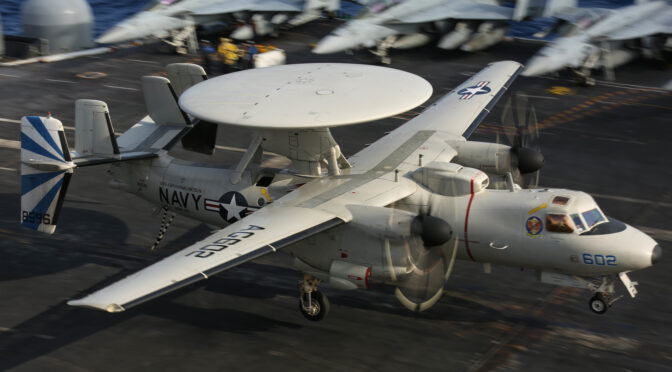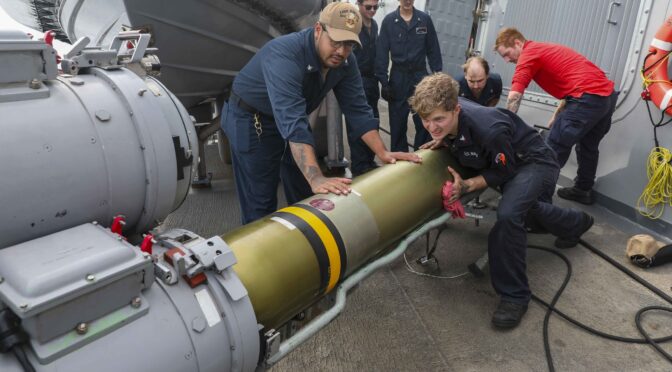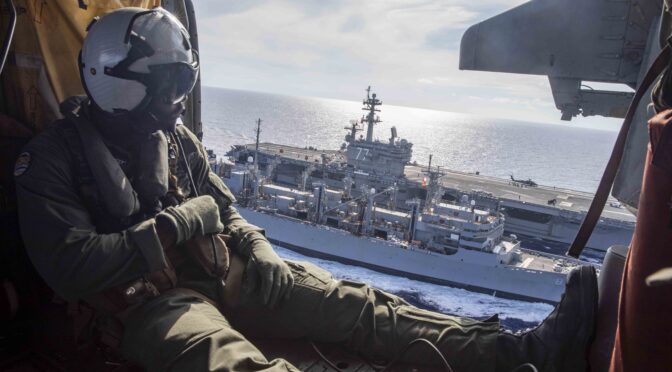By Richard Mosier
The Joint All-Domain Command and Control (JADC2) concept is totally dependent on radiofrequency (RF) communications to connect military assets across the space, air, land, and sea domains. This plethora of RF emissions from U.S. radars, communications systems, data links, and navigation aids presents a lucrative signals intelligence target that could undermine JADC2.
While net-centric concepts such as JADC2 enjoy broad endorsement, the elephant in the room is the underlying risk associated with adversary intelligence collection and exploitation. RF emissions present the best source for channeling enemy wide-area search, classification, and tracking. If U.S. emissions are sufficiently frequent, they provide the basis for maintaining the track continuity required for targeting long-range anti-ship missile strikes. The U.S. should not underestimate the ability of adversaries to take full advantage of the RF opportunity presented by U.S. net-centric operations.
In contrast with the JADC2 concept, service concepts such as Distributed Maritime Operations (DMO) and Expeditionary Advanced Base Operations (EABO) are based on the force being hard-to-find. Recognizing the risk of enemy exploitation of RF emissions, the hard-to-find objective is achieved in large measure through operating in RF silence.
The JADC2 net-centric concept and concepts based on being hard-to-find both make sense, but need to be made more complementary. If the enemy does not know where U.S. units are located, the strategy would be to operate in RF silence to remain hard-to-find, thereby avoiding premature engagements and maintaining the advantage of surprise. When the hard-to-find strategy fails and the U.S. force is facing attack, the strategy would be to rapidly transition to unconstrained RF emissions to leverage the substantial advantage of net-centric operations.
The Navy should request that the Defense Intelligence Agency conduct an assessment, with Navy, NSA, and NRO participation, of the risk of Chinese exploitation of JADC2 RF emissions. If the risk is assessed as high, it would serve to persuade JADC2 advocates of the risks of enemy exploitation of RF emissions, the necessity to conduct some phases of operations in RF silence, and the need for modifications to the JADC2 concept to integrate both.
Richard Mosier is a retired defense contractor systems engineer, Naval Flight Officer, OPNAV N2 civilian analyst, and OSD SES 4 responsible for oversight of tactical intelligence systems and leadership of major defense analyses on UAVs, signals intelligence, and C4ISR.
Featured Image: ATLANTIC OCEAN (Feb. 18, 2019) An E-2D Hawkeye assigned to the “Bluetails” of Carrier Airborne Early Warning Squadron (VAW) 121 performs an arrested landing on the flight deck of the Nimitz-class aircraft carrier USS Abraham Lincoln (CVN 72). (U.S. Navy photo by Mass Communication Specialist 3rd Class Amber Smalley/Released)




